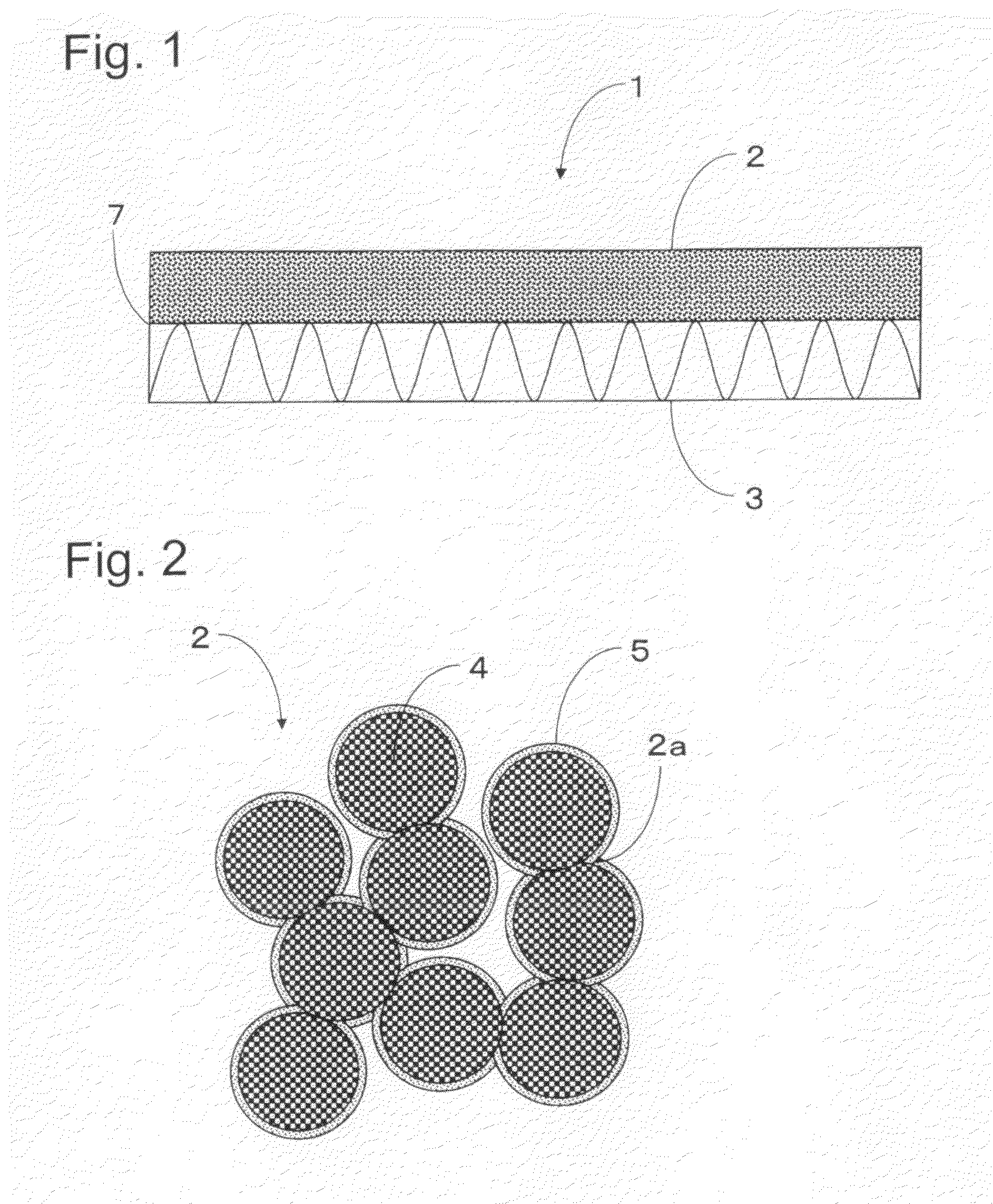Exterior heat insulation panel
a technology for exterior heat insulation and panels, applied in heat insulation, lighting and heating apparatus, heating types, etc., can solve the problems of slow spread of exterior heat insulation buildings, reduced air-conditioning efficiency, and limited methods of exterior heat insulation, so as to achieve the desired strength, improve water retentivity, and shape retentivity for a long time.
- Summary
- Abstract
- Description
- Claims
- Application Information
AI Technical Summary
Benefits of technology
Problems solved by technology
Method used
Image
Examples
embodiment 3
[0055]The strength necessary for the surface layer 2 refers to the strength which enables light walking on the upper surface of the surface layer 2 when the exterior heat insulation panel 1 is placed on a floor. Specifically, the strength refers to the strength at which breaking does not occur in the falling ball test and the bending test described later in Embodiment 3 and the strength greater than a standard of 150 N.
[0056]It is preferable for the surface layer 2 to have a specific gravity of 0.4 to 1.2, and the reason is as follows. If the specific gravity of the surface layer 2 is smaller than 0.4, the tread pressure resistance becomes extremely poor, and thus breaking and defects occur on the surface layer 2 due to the collapse of the porous aggregate. Also, if the specific gravity of the surface layer 2 exceeds 1.2, not only is the water retention rate of the surface layer 2 extremely deteriorated, but also the water permeability of the surface layer 2 becomes extremely poor. ...
embodiment 1
[0065]It is necessary for the binding component to function to fix the porous aggregate 4. It is also necessary for the binding component to include such material and structure that the binding component can maintain its structure even when a load is applied to the exterior heat insulation panel 1. In addition, it is preferable that the binding component does not require, particularly, heating and calcination during manufacturing the panel, is excellent in hydrophilicity, water resistance, heat resistance, ultraviolet degradation resistance, and strength, and can be cured at normal temperature. Accordingly, the cement 5 is used as the binding component in the Also, in the invention, the porous aggregate 4 is coated with the cement 5 and fixed through the contact portion 2.
[0066]The exterior heat insulation panel 1 including such a structure has strong pressure resistance due to the skeletal structure of the porous aggregate 4. As described later, it is necessary for the exterior he...
PUM
 Login to View More
Login to View More Abstract
Description
Claims
Application Information
 Login to View More
Login to View More - R&D
- Intellectual Property
- Life Sciences
- Materials
- Tech Scout
- Unparalleled Data Quality
- Higher Quality Content
- 60% Fewer Hallucinations
Browse by: Latest US Patents, China's latest patents, Technical Efficacy Thesaurus, Application Domain, Technology Topic, Popular Technical Reports.
© 2025 PatSnap. All rights reserved.Legal|Privacy policy|Modern Slavery Act Transparency Statement|Sitemap|About US| Contact US: help@patsnap.com



